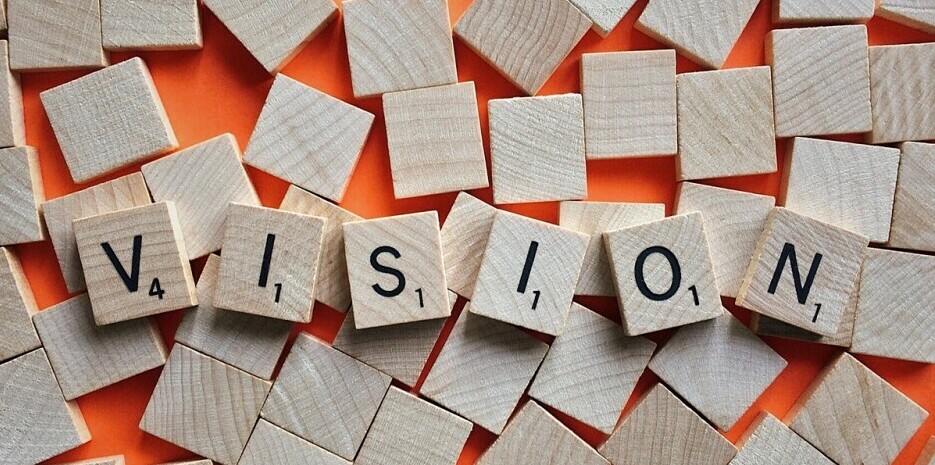Today we are going to talk about the power of visualization in achieving goals and how it can help with stress relief. Could it make your life better and less stressful? Let’s explore some new methods for a better and less stressful life!

Visualization isn’t some mystical or magical thing. It is about imagining your goals vividly, almost as if they are real, to condition your brain to achieve them. People have been doing this for ages, from athletes visualizing their performance to musicians picturing a flawless concert. It is a great way to help yourself and use your potential.
At its core, visualization involves creating a mental image of what you want to achieve. This is not just daydreaming. There is science supporting it. When you visualize something, your brain activates similar regions as if you were actually doing the activity. Crazy, right? This can lead to improved performance, better emotional regulation, enhanced problem-solving skills, and much more.
There are different methods of visualization. You can try dynamic visualization, where you imagine the process of achieving your goal—like running a race or giving a presentation. Another method is outcome visualization, focusing on the end result, like crossing the finish line or receiving applause after a successful talk. Both are great, but mixing them can be really effective.
If you are interested in learning about meditation, CLICK HERE for more info.
Understanding these techniques is the first step towards harnessing visualization for your goals. It is not just about thinking positively, but it is about training your brain to make those positive outcomes a reality.
How Visualization Can Drive Goal Achievement
Setting goals is not always easy, but visualization can make it more manageable. Imagine the goal-setting process like plotting a journey on a map. It would be best if you had a clear destination. Visualization helps turn some aspirations into concrete goals by painting a clear picture in your mind.
Successful people use visualization. Athletes like Michael Phelps have used it to win medals, and entrepreneurs like Oprah Winfrey have visualized their way to success. They don’t just see the end goal, but visualize every step of the journey, rehearsing success mentally before it happens.

Include visualization in your daily routine, and you will notice a difference. Spend a few minutes every morning envisioning your day. Picture yourself successfully tackling tasks or overcoming challenges. By doing this regularly, you will condition your mind to recognize and seize opportunities, making success feel more attainable and within reach.
Vision Board
One effective technique is creating a vision board. This physical or digital board represents your goals visually. Fill it with images and words that symbolize your dreams and look at it often. This will work as a constant reminder and keep your goals visible, making it easier to stay focused and motivated.

Scripts
Another technique is writing detailed scripts of your success. Picture each step vividly, from the moment you start till you achieve your goal. You can write it down like a story where you are the hero achieving great things.
Reading these scripts can provide a powerful boost, reinforcing your commitment and belief in your goals. They seem like great ideas to try and help you be not only less stressed but happier and more successful.
Visualization as a Tool For Stress Relief
Interestingly, visualization is not just about achieving goals— it is also a fantastic tool for stress relief. Life can throw a lot at you, and stress can become overwhelming. This is where visualization steps in, providing a mental escape. It helps you to regain control.
How it works
When you are stressed, your brain goes into overdrive, triggering the fight-or-flight response. Visualization can counteract this by calming the mind and slowing down those racing thoughts. Imagine a peaceful scene—like a beach or a forest. Close your eyes and picture every detail: the sound of waves and the feel of sand. This way your brain responds by moving into a more relaxed state, reducing stress and anxiety.

Closely Linked
Basically, stress relief and goal achievement are closely linked. When you are stressed, it is hard to focus and work towards your goals effectively. Visualization can bridge this gap by helping you manage stress and stay focused. A calm mind is more clear and capable of making better decisions, moving you closer to your goals.
I would have never imagined that visualization can help with stress relief, and not just with goal achievement. But now seems it works like this and could make our lives not only more successful but also less stressful.
Guided visualization exercises are a great way to promote relaxation. Some apps and online resources offer guided sessions, where a calm voice takes you through a visual journey. These exercises can help you relax after a long day or prepare you mentally ready for a big challenge ahead.
So, take a few minutes each day to visualize peace. It doesn’t matter if it is picturing a peaceful landscape or a successful outcome for your goals. Just keep in mind that this practice can reduce stress and boost your overall well-being.
Practical Tips to Enhance Your Visualization Practice
So what can help with your visualization practice? Here are a few tips to move you forward:
Environment
Creating the right environment can make a big difference in your visualization practice. Find a comfortable and quiet space where you won’t be interrupted. This could be a cozy corner at home or a peaceful spot in a park. Remove distractions, take a few deep breaths allowing yourself to fully engage in the mental imagery.

Mindfulness
Combining visualization with mindfulness techniques like meditation can amplify its benefits. Meditation helps clear the mind, making it easier to focus on your visualizations. You can try starting with a few minutes of deep breathing or a simple meditation exercise before you visualize. This can help you get into the right mindset and boost the effectiveness of your practice.
Progress
Tracking your progress can be highly motivating. Keep a journal to document your visualization sessions, noting what you visualized and how it made you feel. Over time, you will see improvements, which can keep you motivated.
Don’t ever be afraid to mix things up. If one visualization method feels stale, or uninteresting try another. Dynamic visualization and outcome visualization are just two techniques—there are plenty of others out there for you to use and try. Experiment with different methods to find what works best for you. We all aren’t the same and what works for one may not work for another.
Conclusion
The power of visualization in achieving goals can help you with stress relief and relaxation. For sure, it can make your life better but also make it easier to deal with stress.
Either way, remember that consistency is key. I would suggest making visualization a regular part of your routine, just like exercise or brushing your teeth. Regular practice strengthens the neural pathways associated with your goals, making them feel more attainable with each session. A few minutes every day can have a big impact over time.
Have you ever tried visualization to achieve goals and help with stress relief? And what do you think about this article? Do you have any advice or suggestions? Please let us know your thoughts and write in the comment section below.
If you are interested in learning about meditation, CLICK HERE for more info.
I would like to hear from you, so please leave me a comment below to let me know if this article helped you.
If you want to know more about ways how you can manage stress, please subscribe to this blog, and you will receive a notification, when a new post is published.
If you think this article is helpful, please share it.
Thank you! Have a nice day! Until later
Linda Mo
Founder and owner of How To Reduce Stress Naturally
